My son didn’t hesitate when it came time for his very first school show-and-tell. He had just started in-person kindergarten (now, once again, virtual) and he wanted something special. I figured it would be a Paw Patrol toy or perhaps one of his many craft projects. Instead, he lifted up Jose R. Castello’s Canids of the World, a Princeton University Press Guide to every species and subspecies of the world’s wild dogs.
I swelled with pride. He has already shown a nearly inexhaustible appetite for nature facts. I recently heard him teaching his grandparents the difference between wild dogs and dingoes. And he clearly gets that a good field guide or nature reference can inspire dreams of future adventures.
I’ve been obsessed with nature books since I was his age. To this day, a good book can absorb me for hours, inspire hope or challenge me with new ideas. And sometimes, just allow me to nerd out.
We can all use the inspiration and entertainment even more this year, when most of us should be avoiding gatherings and staying close to home. Here are some suggestions (and feel free to leave your own in the comments).
-
Naturalist: A Graphic Adaptation
By Edward O. Wilson. Adapted by Jim Ottaviani. Illustrated by C.M. Butzer
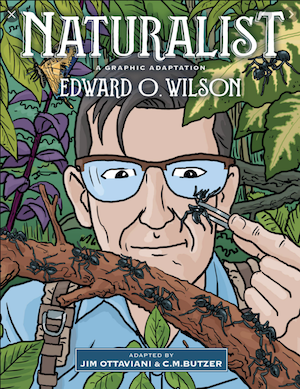
Naturalist is my favorite book by eminent biologist Edward O. Wilson, and also one of my favorite books, period. It’s Wilson’s memoir, about how his childhood fascination with the natural world – especially insects – led to a career of scientific discovery and achievement. I love that Wilson never lost his childlike enthusiasm and curiosity for his subject. That shines through on every page.
What better way to capture that enthusiastic spirit than through a graphic novel adaptation of Naturalist? This is a wonderful idea brilliantly executed. The text is adapted by New York Times bestselling comics author Jim Ottaviani and illustrated by C.M. Butzer.
It features the adventurous quests of Wilson’s youth through full-color illustrations. The story captures Wilson’s warm, gentle humor, his sense of adventure and his passion for his work. It is an accessible story that still conveys the science of the original edition.
It’s a must-have for Wilson fans (and I am one), but will also reach a new generation of readers. A perfect gift for the comic book fan or budding naturalist on your list.
-
The Reindeer Chronicles
By Judith D. Schwartz

The news about the environment is often gloomy, as environmental reporter Judith Schwartz is well aware. The scale of the problems can lead to feelings of doom, the sense that nothing can be done. But here Schwartz parts company with many environmentalists. She sees examples around the globe of people taking action, not just speaking out against something but actually playing active roles in repairing the earth.
This book tells stories of restoration at all scales, “from a small plot between sidewalk and curb to areas large enough to be labeled on a world map.” She spends time with people who, faced with seemingly insurmountable challenges, look to nature for solutions. Rather than wait for the perfect conditions, they experiment, reach out to neighbors (sometimes, hostile neighbors) and shape better futures.
As Schwartz notes, “Earth repair is a participatory sport.”
I especially appreciate that Schwartz reaches beyond the usual conservation narratives. While she recognizes that governments and large organizations have important roles to play, many of the stories are about individuals and communities who develop creative solutions. She demonstrates how traditional Indigenous knowledge often holds important keys to sustainability and food security, as with the Sami herders who show how more reindeer on their homeland can offer a more climate-resilient future.
There are a lot of ideas in this well-reported book for conservationists to ponder. And it may well inspire you to begin a bit of restoration on your own, perhaps in your backyard or nearby vacant lot.
-
Casting Forward
By Steve Ramirez
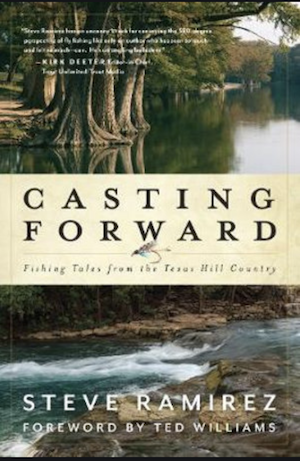
For many, including me, fishing is a source of solace and peace. But fishing can also be a trivial pursuit; casting a fly doesn’t magically bestow mindfulness. How can one be a more thoughtful angler? You can have no better guide than Steve Ramirez.
Ramirez is a former Marine and career Texas law enforcement agent facing PTSD, job loss and life disappointments. He turns to fly fishing, running waters and native fish for a sense of calm and belonging. He recognizes the ethereal nature of life, both its triumphs and disappointments, and instead of wallowing in despair, he takes another cast.
I’ve read a mountain of fly fishing books and, all too often, the philosophy is trite and cliched. Not here. Not with Ramirez. His often-harsh and sometimes-violent life experiences give him a clear-eyed view of what’s really important, including his beloved Texas Hill Country rivers. The descriptions of his pursuit of native bass and sunfish are perfect, as are his frequent ruminations on the importance of free-flowing rivers and the joys of sharing the experience with family and friends.
Ramirez recognizes an essential truth: fishing can help provide meaning and purpose in a life, but part of the bargain is that we have to find ways to give back to rivers, native fish and healthy ecosystems.
He approaches the water with a warrior-poet’s grace and generosity. I was honored to write a back-cover blurb for Casting Forward; it’s a gem of a fishing book and one any angler (or conservationist) would enjoy.
-
Gone Wild
By Malcolm Smith
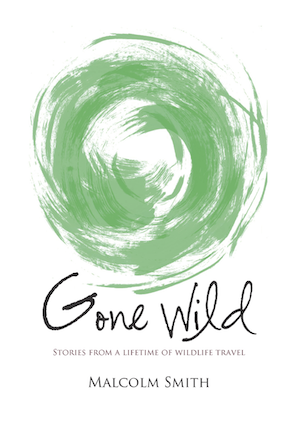
My travel lately has been largely vicarious, and this book of wildlife adventures inspires dreams of better days ahead. British writer and naturalist Malcolm Smith has enjoyed remarkable wildlife travel adventures around the globe, and he shares many of his most memorable journeys here.
Smith joins Icelandic eider down collectors as they collect feathers from nests, stakes out bustards, joins a rhino-darting project, and treks after wild animals from moose to pythons to Arabian oryx. Anyone who has made many wildlife-watching trips will enjoy his descriptions of guides good and bad, of ill-planned detours, and of the last-minute sightings that make all the bad roads and bad weather worth it.
This book is not just about travel to well-known nature destinations. Smith is a journalist, and is often on assignment to cover conservation and environmental issues. Wherever he is – on a boat to Timbuktu, on a walk near his home – he’s on the lookout for interesting birds and other wildlife. He recognizes one of the most important lessons for a naturalist: wildlife is where you find, and that’s not always in “pristine” places.
If you’re stuck at home, it’s a great read to transport you to locations both exotic and familiar.
-
Semi-Aquatic Mammals: Ecology and Biology
By Glynnis A. Hood
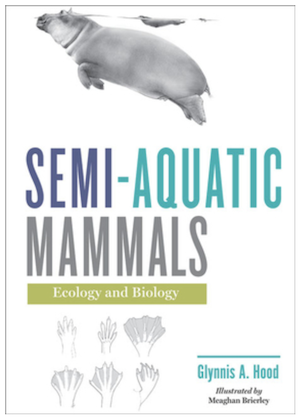
I always include at least one book for the serious nature nerd, and here you go: an in-depth treatise on 140 semi-aquatic mammals. These are mammals that spend part of their lives on land and part in fresh water, a diverse range of creatures that includes muskrats and otters, swamp rabbits and marsh deer, platypus and water shrews.
These are, to my mind, some of the coolest animals on earth (that also happen to be found in some of the coolest places). How do they navigate the different realms of land and water? A significant portion of the book focuses on the interesting and sometimes bizarre adaptations of these animals. The water opossum, for instance, has a backward-facing pouch to keep young dry when it dives into lakes.
Ecologist Glynnis Hood covers nearly anything you could want to know about these mammals. There are species that shape entire ecosystems, like beavers and hippos. There are others that have become devastating invasive species, like nutria in North America and American mink in Europe. Others have been the focus of reintroductions and extensive conservation efforts, from Russian desmans to Pere David’s deer.
It’s all here, in this mammal reference that I’ll doubtless refer to again and again.
-
Extreme Conservation
By Joel Berger
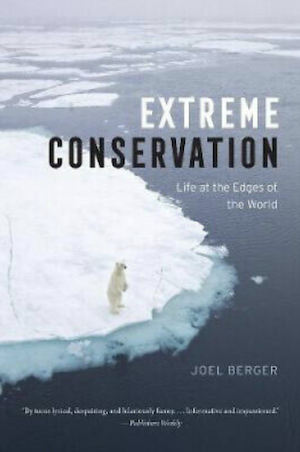
This book is about large mammals that survive and thrive in seemingly inhospitable environments, creatures like muskox in the frigid Arctic, wild yaks in the high-elevation Himalayas, and saigas in the arid Gobi Desert. Wildlife Conservation Society biologist Joel Berger explores how these animals are managing, and more importantly, whether their existence is threatened by climate change.
As with Berger’s other books, this one is a combination of field adventure, wildly cool wild animals and thought-provoking conservation philosophy. I’ll find myself caught up in the story when Berger adds a challenging thought. The depth and breadth of his field experience provides him with some interesting insights on how people can best coexist with wildlife.
He reflects on the ethics of capturing animals for field research, the complicated relationships local communities often have with large wildlife, the unforeseen consequences of poorly researched management decisions and more. Above all, this is a love letter to wild things and field work by one of the most accomplished conservation biologists.
-
Felids and Hyenas of the World
By Jose R. Castello
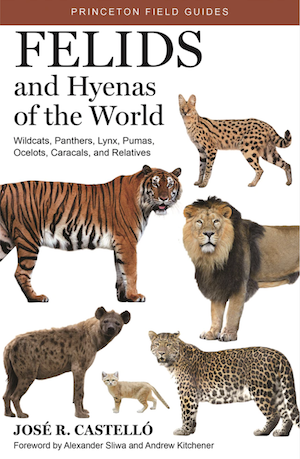
This is the latest in the line of Jose R. Castello’s Princeton guides, following Bovids of the World and the aforementioned Canids of the World. I love these books: they’re beautiful and packed with great information. They cover all recognized species and subspecies in depth. The photos and field-guide presentation make them equally appealing to kids, like my son.
Felids and Hyenas of the World covers 41 wild cats and 4 hyenas. It includes more than 150 color plates with more than 600 photos. It has full coverage of the well-known big cats – the lions and tigers and cheetahs – as well as the caracals, fishing cats, lynxes and more.
I understand Castello is now working on a guide to cervids (the deer family), and I can hardly wait.
My son hasn’t seen this one yet, but (don’t tell) it might be under the tree in a few weeks.
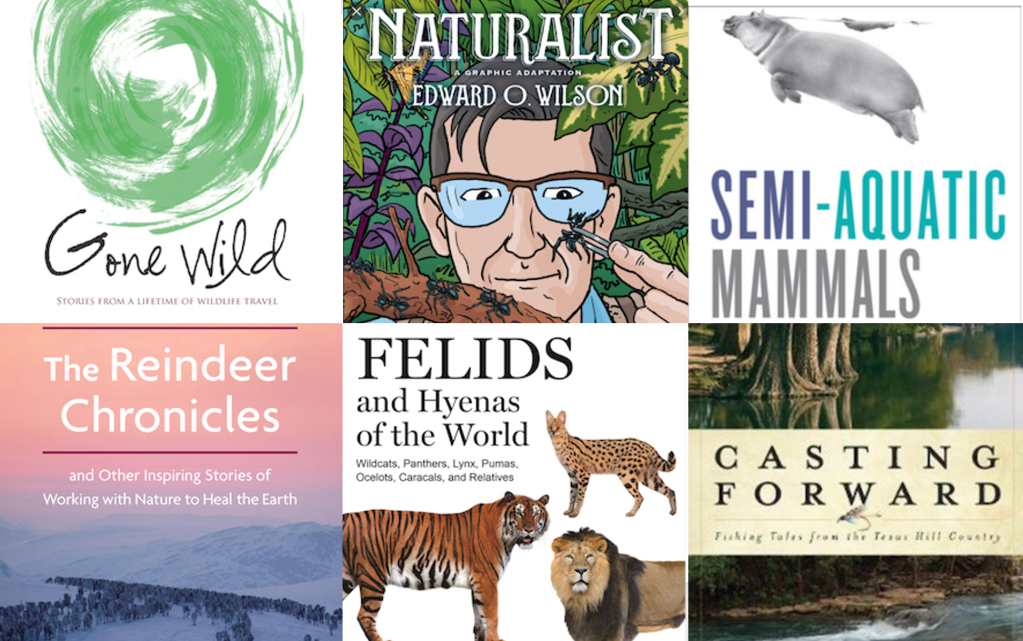



My To Be Read list just got longer, but so did my Christmas wish list, so it is all good! Thanks for the recommendations!
Great bunch of books – will certainly ask at my library (I dont buy books anymore ) but I READ!
Thanks
I really love your articles and your POV. Thank you so much for keeping us informed, enthused and engaged during this terrible year. These books will enrich the coming year which we all hope will bear good fruit from the trials of this one.
Happy Holidays to you and your family, Matt!
Thank you! I am glad you enjoy the stories and reviews!
Hope you have a happy holiday, too.
Best,
Matt Miller